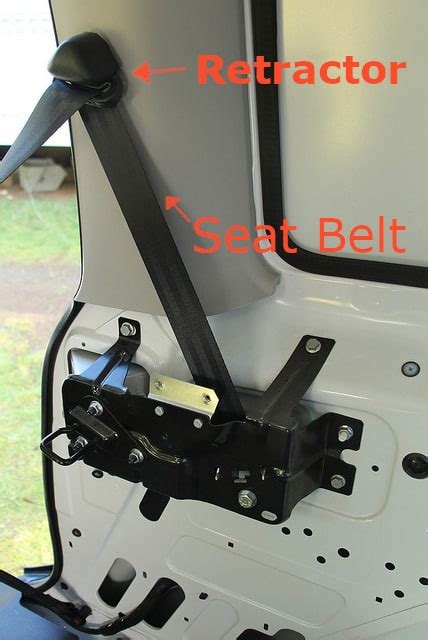DIY Seat Belt Retractor Repair: Expert Advice
Seat belt retractors are critical safety components in your vehicle. A malfunctioning retractor can compromise your safety and lead to costly repairs. While professional repair is often recommended, understanding the basics of seat belt retractor repair can help you assess the situation and decide on the best course of action. This guide offers expert advice on DIY seat belt retractor repair, emphasizing safety and highlighting when professional intervention is necessary.
Disclaimer: Working on automotive safety systems requires caution and expertise. This guide provides information for educational purposes only. Attempting repairs without the proper knowledge and tools can be dangerous and may void your vehicle's warranty. Always prioritize safety and consider professional repair if you're unsure about any aspect of the process.
Understanding Seat Belt Retractor Mechanisms
Before attempting any repair, it’s crucial to understand how a seat belt retractor functions. The retractor is a complex mechanism containing a spring, a ratchet, and a locking mechanism. The spring allows the belt to extend smoothly, while the ratchet and locking mechanism ensure the belt retracts and locks in place during an accident or sudden braking. Common problems include:
- Slow retraction: The belt retracts slowly or doesn't retract completely. This often points to a weakened spring or a problem with the internal mechanism.
- Belt jamming: The belt gets stuck and won't extend or retract. This might be due to debris, internal damage, or a malfunctioning locking mechanism.
- Failure to lock: The belt doesn't lock properly during braking or impact. This is a serious safety issue requiring immediate professional attention.
Can I Repair a Seat Belt Retractor Myself?
The answer is often "no" for most serious issues. While some minor issues might seem DIY-friendly, accessing and repairing the internal components of a seat belt retractor is generally complex and requires specialized tools and expertise. The risk of improper repair outweighs the potential cost savings in most cases.
What are the Common Problems with Seat Belt Retractors? (PAA Question)
Common problems include slow retraction, complete failure to retract, the belt jamming, and failure of the locking mechanism to engage correctly. These issues usually stem from wear and tear, damage from accidents, or the build-up of dirt and debris within the retractor mechanism.
How Do I Diagnose a Faulty Seat Belt Retractor? (PAA Question)
Diagnosis involves carefully observing the belt's behavior. Does it retract slowly? Does it jam? Does it lock properly when you sharply pull it? Visually inspect the belt and retractor for any obvious signs of damage or debris. If the retractor is significantly damaged or shows signs of an accident, professional replacement is highly recommended.
What Tools Are Needed for Seat Belt Retractor Repair? (PAA Question)
Attempting DIY repair requires specialized tools, including specific screwdrivers, possibly a specialized retractor testing tool, and potentially a spring compressor. Lacking the right tools can lead to further damage or injury.
Is it Safe to Drive with a Faulty Seat Belt Retractor? (PAA Question)
No. Driving with a faulty seat belt retractor is unsafe. A malfunctioning retractor can prevent the seat belt from restraining you properly in a collision, increasing your risk of serious injury.
How Much Does it Cost to Repair or Replace a Seat Belt Retractor? (PAA Question)
The cost varies significantly depending on the vehicle's make, model, and the extent of the damage. A simple cleaning might cost little to nothing, while replacement can cost hundreds of dollars, including labor.
When Should I Call a Professional?
You should contact a qualified mechanic or automotive repair specialist immediately if:
- The belt fails to lock properly.
- The retractor shows signs of significant damage.
- You are uncomfortable attempting any repair yourself.
- You're unsure of the cause of the malfunction.
Conclusion: Prioritize Safety
While understanding the basics of seat belt retractor function is useful, remember that safety should always be your top priority. In most cases, attempting a DIY repair on a crucial safety component like a seat belt retractor is not recommended. If you have any doubts, consult a professional. The cost of professional repair is significantly less than the cost of a potential injury.

